Photo

Green Elfcup (Chlorociboria aeruginascens) apothecia. The rare small fruiting bodies of ascomycete fungus like this are called ascocarps, and the cup-shaped ascocarps of this species are called apothecia. The green pigment of the mycelium within the wood makes it valuable for decorative woodworking, where it is known as green oak and has been used since at least the 15th century. Wimbledon Common, 14/11/17 #chlorociboria #chlorociboriaaeruginascens #greenelfcup #ascomycota #apothecia #greenoak #mushrooms #wimbledoncommon (at Wimbledon and Putney Commons)
#apothecia#ascomycota#wimbledoncommon#mushrooms#greenoak#chlorociboria#chlorociboriaaeruginascens#greenelfcup
2 notes
·
View notes
Photo
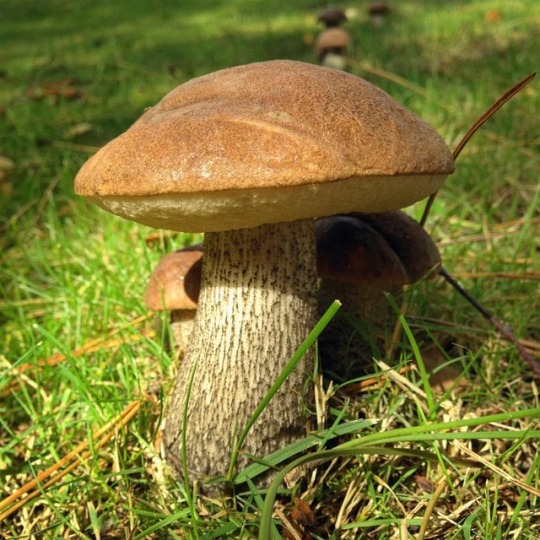
Brown Birch bolete (Leccinum scabrum), East Grinstead, 19/09/17 #leccinum #leccinumscabrum #bolete #brownbirchbolete #foraging #wildmushrooms #mushroomforaging (at East Grinstead)
0 notes
Photo
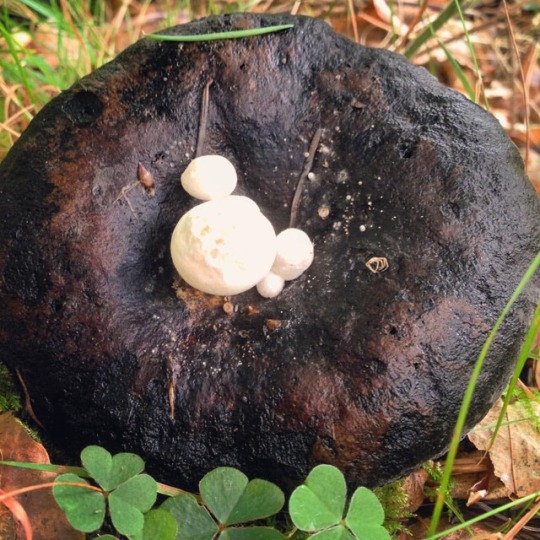
Russula parasite (Asterophora parasitica) on Russula nigricans. This gilled fungus is parasitic upon specimens of Russula and Lactarius, particularly Russula nigricans. Despite living on a mushroom, it's geographic range is limited to that of Quercus species, suggesting it requires compounds from oak trees to be present second-hand within its host fungi. Tilgate Park, 07/09/17 #fungi #parasiticfungus #Asterophoraparasitica #asterophora #foraging #russulanigricans #tilgatepark (at Tilgate Park)
0 notes
Photo
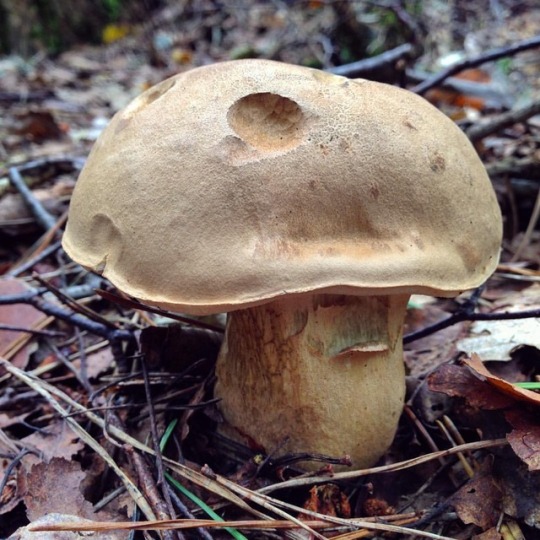
Bitter bolete (Tylopilus felleus), Ashdown Forest. This bolete, not poisonous but inedible due to its bitter taste that will ruin any dish it is accidentally included in, is distinguished from desirable boletes by its pale pink pore surface that bruises brown. It is used dried as a spice in some cultures. Ashdown forage, 03/09/17 #fungi #bolete #tylopilusfelleus #bitterbolete #foraging #wildfood #ashdownforest (at Ashdown Forest)
0 notes
Photo

Hedgehog ring (Hydnum repandum), Ashdown Forest. This fine edible species is being studied for its mycoremedial abilities; the mycelial network beneath the ground draws toxic metals out of the soil and sequesters them into the mushroom or fruiting body we see here. This can negatively impact animals eating them as is the case in the Chernobyl Exclusion Zone where radioactive caesium, withdrawn from the soil and concentrated in the fruiting body, builds up in the wild boar that browse the mushrooms causing genetic mutation. Ashdown forage, 03/09/17 #fungi #hydnumrepandum #hedgehogmushroom #foraging #wildfood #mushroomforaging #woodland #ashdownforest #fairyring #mushroomring (at Ashdown Forest)
#mushroomforaging#fairyring#fungi#hedgehogmushroom#wildfood#ashdownforest#hydnumrepandum#woodland#foraging#mushroomring
0 notes
Photo

Bolete eater mold (Hypomyces chrysospermus) on red cracking bolete. This parasitic ascomycete attacks and digests bolete fungal fruiting bodies, a fungi on a fungi. Each member of the Hypomyces genus is parasitic on different fungi genera; the related H. lactifluorum parasitises the Russulaceae family, becoming a prized edible known as Lobster mushroom. While H. chrysospermus is inedible, Eastern medicine applies it powdered as a wound staunch and healing aid. Ripley Green, Surrey, 01/08/17 #mushroom #bolete #surreywildlife #boleteeater #hypomyces #hypomyceschrysospermus #ascomycota #parasiticfungus #fungi (at Ripley Green)
#ascomycota#boleteeater#bolete#hypomyceschrysospermus#surreywildlife#parasiticfungus#mushroom#fungi#hypomyces
0 notes
Photo

Rooting bolete (Caloboletus radicans). Looking like a string of dropped dumplings this irregularly shaped inedible bolete associates with oak and beech, with pale firm flesh, very fine pores and a remarkably strong mycelial attachment to the soil. Ockham Park, 27/07/17 #caloboletusradicans #bolete #rootingbolete #mushroom #ockham #foraging (at Ockham)
0 notes
Photo
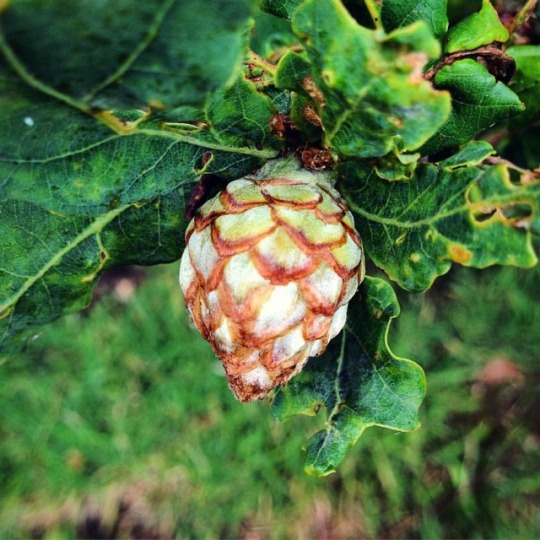
Oak artichoke gall (Andricus foecundatrix). This gall is chemically induced by wasp eggs laid in buds of pedunculate and sessile oak, particularly scrub specimens. Once grown this structure is often invaded by inquiline species (those that live in the nests of other species) that are harmless to the developing wasp larvae, benefitting from the galls' protection and starch concentration. Ripley, 19/07/17 #gall #andricus #andricusfoecundatrix #cynipidae #parasite #artichokegall #oak #wasp #gallwasp #oakgall #surreywildlife (at Ripley, Surrey)
#cynipidae#surreywildlife#gall#andricus#andricusfoecundatrix#oak#wasp#artichokegall#oakgall#parasite#gallwasp
0 notes
Photo
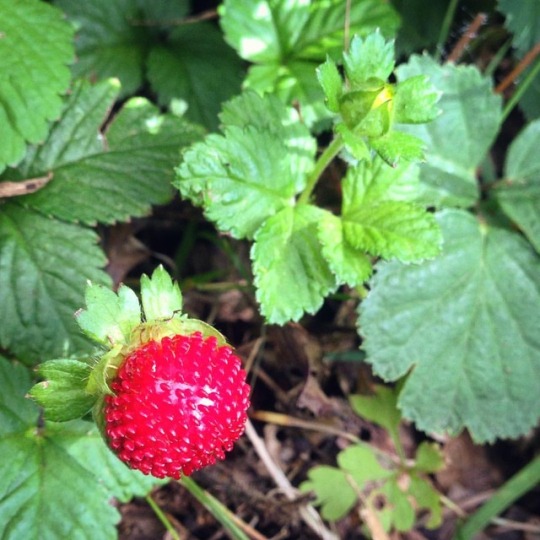
Mock strawberry (Duchesnea indica). This strawberry lookalike evolved its appearance independently of the true strawberry family, to which it is not closely related. Native to Asia it is considered invasive in many countries it has spread to through ornamental planting. The fruit is remarkably tasteless with the faintest hint of watermelon. In the folk medicine of its native range, the crushed leaves are used to treat skin problems. Ripley, 20/07/17 #mockstrawberry #duchesneaindica #potentillaindica #potentilla #wildforaging #forage #folkmedicine #itlookedsotasty (at Ripley, Surrey)
#folkmedicine#potentilla#forage#mockstrawberry#itlookedsotasty#duchesneaindica#wildforaging#potentillaindica
0 notes
Photo

Cinnabar moth caterpillars (Tyria jacobaeae). These brightly coloured larvae develop into equally brightly coloured red and black moths, named after the red mineral ore of mercury, cinnabar. Their bright colours are a warning of their toxicity due to exclusive feeding on genus Senecio such as ragwort shown here, from which they absorb alkaloids that make them unpalatable, and they also possess irritating hairs. Because of this they face low predation, often leading to large populations completely stripping food sources before reaching pupation. This has led to the evolution of frequent cannibalism as a population and thus food source regulating mechanism. Chertsey, 14/07/17 #cinnabarmoth #caterpillar #tyriajacobaeae #toxiccolors #lepidoptera #ragwort #blackandyellow (at Chertsey)
1 note
·
View note
Photo
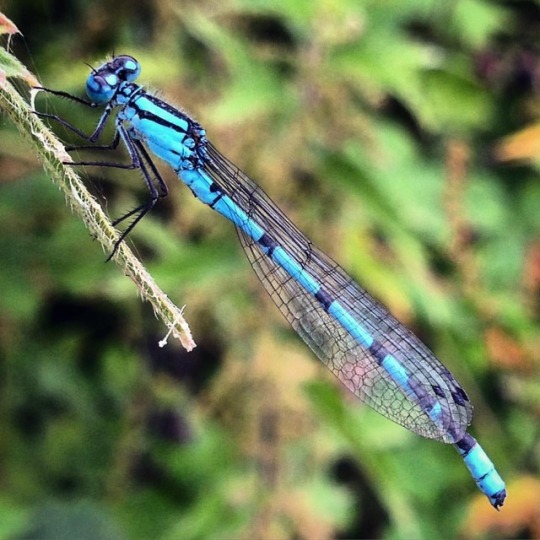
Common blue damselfly (Enallagma cyathigerum), male. Careful attention to thorax and abdomen markings differentiates this species from the Azure damselfly, which it closely resembles. Despite its colour and charm this species is possibly Britains most common dragon or damselfly, inhabiting a range of water bodies. Chertsey, 14/07/17 #odonata #damselfly #commonbluedamselfly #insect #enallagmacyathigerum #blue #surreywildlife #ukinsects (at Chertsey)
0 notes
Photo

Mediterranean Sea Holly (Eryngium bourgatii), Picos de Europa, Spain, 11/07/17 #eryngium #eryngiumbourgatii (at Picos de Europa)
0 notes
Photo

Large Skipper butterfly (Ochlodes sylvanus). The hooked antennae identifies this apart from other skippers, and the dark androconial line along the forewings, a pheromone dispersing structure that aids in mate finding, identifies this individual as male. Their larvae use silk to roll leaves into a shelter, and while their native range is wide, Southern European populations can produce three broods per year to the Northern populations one. Bethlem Hospital, Beckenham, England, 26/06/17 #ochlodessylvanus #largeskipper #butterfly #lepidoptera #burntsienna (at Bethlem Royal Hospital)
0 notes
Photo

Marbled rock crab (Pachygrapsus marmoratus). An intertidal species whose native range in Southern Europe from the Black through Mediterranean seas to the Spanish and French Atlantic coast is extending to Southern British coasts due to climate change warming coastal waters. An omnivorous but not opportunistic feeder, this species actively balances its own diet to maintain ratios of plant and animal consumption regardless of local abundance, limiting populations through available food resources and, if facing insufficient animal food sources, cannibalism. Playa la Isla, Asturias, Spain, 08/07/17 #crab #cangrejo #marbledrockcrab #marbledcrab #pachygrapsus #pachygrapsusmarmoratus #decapoda #arthropoda (at Playa de la Isla)
0 notes
Photo
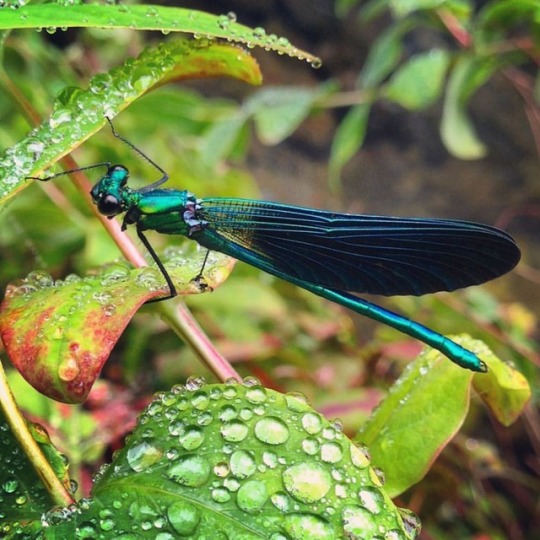
Beautiful Demoiselle (Calopteryx virgo) damselfly, male. A species whose exacting habitat requirements makes a difficult conservation target. Larvae and adults require medium sized fast flowing streams, cool and shaded with good aquatic vegetation and well structured bank vegetation. Highly oxygenated waters are so key, the species is used as a bioindicator for water quality assessment. They spend 2 years underwater as larvae and around 40 days as adults, mating several times a day for weeks until death. Demoiselle (meaning damsel, young woman) derives from a diminutive (implying smaller or weaker form) of the Latin "domina", in ancient times meaning respected lady of the house, still used today meaning something either quite different or very similar depending on attitude. Loroñe, Asturias, Spain, 08/07/17 #damselfly #demoiselle #beautifuldemoiselle #odonata #calopteryx #calopteryxvirgo #metallic #metallics #asturias #domina (at Loroñe, Asturias, Spain)
#asturias#demoiselle#calopteryx#metallic#metallics#domina#calopteryxvirgo#beautifuldemoiselle#odonata#damselfly
0 notes
Photo
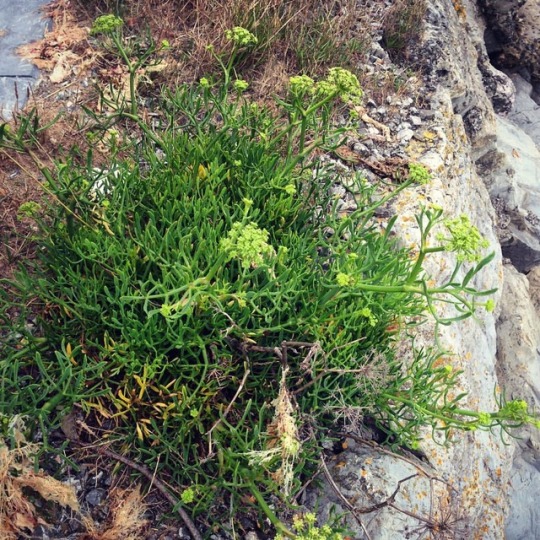
Rock samphire (Crithmum maritimum, sole member of the genus), a wild edible plant found on on rocky coasts, that is spicy and aromatic with a citrus scent. Shakespeare referred to the dangerous cliffside gathering of it in The Tragedy of King Lear: "Half-way down, hangs one that gathers samphire; dreadful trade!". It is cultivatable but former natural abundance made wild populations easily overexploited, making it rarer in Britain than the continent today. Villaviciosa, Asturias, Spain, 07/07/17 #rocksamphire #foraging #crithmum #crithmummaritimum #asturias #wildforaging #samphire (at El Puntal (Villaviciosa))
0 notes
Photo

Iberian Rock lizard (Iberolacerta monticola), female. A cold tolerant reptile species capable of living above the tree line of the Spanish Cantabrian mountains, this individual however found in sea level woodland of Asturias, a pocket of fragmented habitat where it is fairly numerous despite its overall vulnerable status on the IUCN Red List. Villaviciosa, Asturias, Spain, 07/07/17 #lizard #iberolacertamonticola #iberolacerta #reptile #reptilesofinstagram #asturias (at El Puntal (Villaviciosa))
0 notes